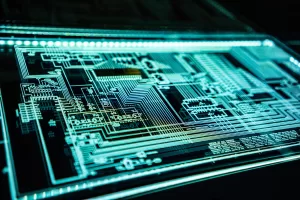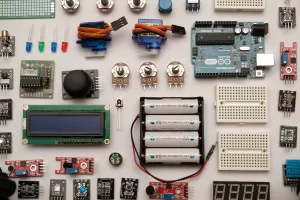
What are Optoisolators?
December 04 2023 
Inquiry
Global electronic component supplier AMPHEO PTY LTD: Rich inventory for one-stop shopping. Inquire easily, and receive fast, customized solutions and quotes.
QUICK RFQ
ADD TO RFQ LIST
This blog will cover the fundamental concepts of optoisolators to help you gain a better understanding of their importance.
What are Optoisolators?
Optoisolators, also known as optocouplers, are electronic components that are used to transfer electrical signals between two isolated circuits by using light. They consist of a light-emitting diode (LED) and a photodetector, such as a phototransistor or a photodiode, which are contained within a single package. The primary purpose of optoisolators is to provide electrical isolation between input and output circuits, preventing the flow of electrical current and thus protecting sensitive components or circuits from high voltages, voltage spikes, or noise. Optoisolators find widespread use in various electronic systems, including industrial control and automation, power supply circuits, digital communication interfaces, and medical devices. They often isolate microcontrollers, sensors, and other low-voltage components from higher-voltage or noisy environments. Additionally, optoisolators can provide galvanic isolation, which is essential for ensuring safety and preventing ground loops in certain applications. In summary, optoisolators are essential components for achieving electrical isolation and signal transfer between two circuits using light. Their ability to protect against electrical hazards and interference makes them valuable in a wide range of electronic systems, contributing to the overall reliability and safety of these systems.
How Does an Optoisolator Work?
An optoisolator, also known as an optocoupler, operates based on the principle of using light to transfer electrical signals between two isolated circuits. It consists of a light-emitting diode (LED) on the input side and a photodetector, such as a phototransistor or a photodiode, on the output side, all contained within a single package. The key function of an optoisolator is to provide electrical isolation between the input and output circuits, preventing the flow of electrical current and thus protecting sensitive components or circuits from high voltages, voltage spikes, or noise. The operation of an optoisolator begins with the input circuit applying a voltage or current to the LED. When the LED is energized, it emits light. This emitted light then strikes the photodetector in the output circuit, causing it to conduct and transfer the signal. The physical separation between the input and output sides of the optoisolator ensures that there is no direct electrical connection between the two circuits, achieving electrical isolation. This isolation is crucial in applications where safety, noise immunity, or protection against voltage surges is required. The use of light to transfer signals in an optoisolator offers several advantages. Firstly, it provides a high degree of isolation between the input and output circuits, which is essential for safety and protection against electrical hazards. Additionally, the absence of a direct electrical connection helps to prevent ground loops and interference, making optoisolators valuable in applications where signal integrity is critical. Optoisolators are widely used in various electronic systems, including industrial control and automation, power supply circuits, digital communication interfaces, and medical devices. They often isolate microcontrollers, sensors, and other low-voltage components from higher-voltage or noisy environments. Their ability to protect against electrical hazards and interference makes them essential components for ensuring the reliability and safety of electronic systems.DC Optoisolator
A DC optoisolator, also known as a DC-coupled optoisolator, is a type of optoisolator specifically designed to transfer direct current (DC) signals between two isolated circuits using light. It consists of an LED on the input side and a photodetector, such as a phototransistor or a photodiode, on the output side, all contained within a single package. The primary function of a DC optoisolator is to provide electrical isolation between the input and output circuits, preventing the flow of electrical current and thus protecting sensitive components or circuits from high voltages, voltage spikes, or noise in DC applications. In a DC optoisolator, the input circuit applies a DC voltage or current to the LED. When the LED is energized, it emits light. This emitted light then strikes the photodetector in the output circuit, causing it to conduct and transfer the DC signal. The physical separation between the input and output sides of the optoisolator ensures that there is no direct electrical connection between the two circuits, achieving electrical isolation. This isolation is crucial in DC applications where safety, noise immunity, or protection against voltage surges is required. DC optoisolators are commonly used in various DC-based electronic systems, including power supply circuits, battery management systems, motor control, and DC signal isolation. They are often employed to isolate low-voltage control circuits from high-voltage or noisy environments, protecting against electrical hazards and interference. Additionally, DC optoisolators can provide galvanic isolation, which is essential for ensuring safety and preventing ground loops in DC applications. In summary, DC optoisolators are essential components for achieving electrical isolation and signal transfer in DC-based electronic systems using light. Their ability to protect against electrical hazards and interference makes them valuable in a wide range of DC applications, contributing to the overall reliability and safety of these systems.
How to Read Optoisolators?
Reading optoisolators involves understanding their datasheets, which provide essential information about their electrical and optical characteristics. When reading an optoisolator datasheet, several key parameters and specifications should be considered to ensure proper selection and usage in a given application.- Input and Output Parameters: The datasheet typically specifies the maximum forward current and forward voltage for the LED on the input side, as well as the collector-emitter voltage and current for the photodetector on the output side. These parameters are crucial for determining the operating conditions and compatibility with the input and output circuits.
- Isolation Voltage: The isolation voltage rating indicates the maximum voltage that can be safely applied between the input and output sides of the optoisolator. This parameter is essential for ensuring safety and preventing electrical breakdown between the isolated circuits.
- CTR (Current Transfer Ratio): The CTR, also known as current transfer gain, represents the ratio of the output collector current to the input LED current. It is a critical parameter for determining the optoisolator's efficiency in transferring the input signal to the output side. The datasheet provides CTR values under specified conditions, such as forward current and temperature.
- Speed and Response Time: Optoisolator datasheets often include information about the device's speed and response time, which are crucial for applications requiring fast signal transfer. These parameters indicate the optoisolator's ability to respond to changes in the input signal and transfer them to the output side with minimal delay.
- Temperature and Environmental Considerations: The datasheet provides information about the optoisolator's operating temperature range, storage temperature range, and environmental conditions, ensuring that the device can perform reliably within specified temperature and environmental limits.
- Package and Mounting Information: The datasheet includes details about the optoisolator's package type, dimensions, and recommended mounting techniques. This information is essential for the proper integration of the optoisolator into the application's circuitry and PCB layout.

Applications for Optoisolators
Optoisolators find diverse applications across various industries and electronic systems due to their ability to provide electrical isolation and signal transfer using light. Some common applications for optoisolators include:- Industrial Control and Automation: Optoisolators are widely used in industrial control systems to isolate low-voltage control circuits from high-voltage or noisy environments. They are employed in motor drives, PLC (Programmable Logic Controller) interfaces, and power supply circuits to ensure safety, protect sensitive electronics, and prevent ground loops.
- Power Supply Circuits: In power supply designs, optoisolators are utilized to provide feedback and control signals while maintaining isolation between the primary and secondary sides of the power supply. They help regulate voltage, current, and power factor correction, contributing to the overall efficiency and safety of the power supply system.
- Digital Communication Interfaces: Optoisolators are used in digital communication interfaces, such as RS-232, RS-485, and CAN bus, to provide isolation and protect sensitive microcontrollers and communication chips from voltage spikes and noise. They help ensure reliable data transmission and prevent damage to connected devices.
- Medical Devices: In medical equipment and devices, optoisolators play a crucial role in providing isolation between patient-connected circuits and the rest of the system. They are used in applications such as patient monitoring, diagnostic equipment, and medical imaging systems to ensure patient safety and prevent electrical hazards.
- Audio Equipment: Optoisolators are employed in audio equipment, such as amplifiers and mixers, to provide isolation between different audio signal paths. They help eliminate ground loops, reduce noise, and prevent interference, contributing to improved audio quality and system performance.
- Battery Management Systems: In electric vehicles, hybrid vehicles, and energy storage systems, optoisolators are used in battery management systems to provide isolation between the battery cells and the monitoring/control circuits. They help ensure safety, protect against high voltages, and enable accurate monitoring and balancing of battery cells.
- Isolated Switching Power Supplies: Optoisolators are integral components in isolated switching power supplies, where they provide feedback and control signals while maintaining isolation between the primary and secondary sides of the power supply. They contribute to the power supply system's overall efficiency, safety, and regulation.
Conclusion
Their applications demonstrate the versatility and importance of optoisolators in ensuring electrical safety, signal integrity, and reliable operation across a wide range of electronic systems and industries. Their ability to provide isolation and protection against electrical hazards makes them essential components in modern electronic designs.Related Articles
Populer Posts
